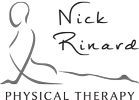Learn more about the certified MDT method treated at Nick Rinard Physical Therapy
https://www.facebook.com/139184759454589/posts/2370831772956532/
More (formerly Mechanical Diagnosis and Therapy of Portland, PC)
(formerly Mechanical Diagnosis and Therapy of Portland, PC)
https://www.facebook.com/139184759454589/posts/2370831772956532/
MoreNick Rinard Physical Therapy looked at “McKenzie physical therapy Portland” to see which clinics advertised using this credentialed method. We noticed a trend of clinics advertising use of the method but none of their physical therapists were actually certified in MDT. Nick Rinard Physical Therapy is certified in the methodology, has been for the last 19 years and always will be update in the MDT community! Make sure you are getting this scientific, up to date, physical therapy treatment by scheduling your visit at Nick Rinard Physical Therapy.
Morehttps://www.facebook.com/140277053186246/posts/372361013311181/
MoreBy now many of us have made our resolutions and set our goals for 2019.
How likely are you to succeed at your endeavor?
Check out this article and see if there are helpful tips that may make you more successful in your self-actualization:
https://www.nhs.uk/live-well/healthy-body/10-tips-to-keep-your-new-years-resolution/
Margo Burette DPT
Morehttps://www.facebook.com/139184759454589/posts/2355950784444631/
Morehttps://www.facebook.com/139184759454589/posts/2363049170401459/
MoreI’d like to share the success story of one our patients. Let’s call her Cindy Lou like the precious little Who from Whoville in Dr. Seuss’ storybook How the Grinch Stole Christmas! Cindy Lou had a total knee replacement surgery 4.5 months ago. She came in to our clinic in August barely able to walk using a walker. Today, she is not only walking well, she is dancing with her Jazzercise group!
Cindy Lou was very successful with physical therapy due to her diligence with her home exercise program. She had to work through some very intense pain to recover her full flexion and extension range of motion. Her perseverance with daily, diligent stretches has finally restored her full range of motion.
One challenge that Cindy Lou faced was managing swelling (edema) post-operative. Let me mention here some things that made a positive difference for her: 1) Ice and elevation (20’ multiple times a day in the first 4-6 weeks after surgery), 2) TED compression hose, 3) Retrograde massage (gentle pressure sweeping upward from the base of the knee to the thigh to encourage lymphatic return) and 4) Staying moving! Too much time in a sedentary position with her leg in the dependent position would increase her swelling, which then created more stiffness and pain.
Congratulations, Cindy Lou! We are proud of your perseverance through your post-operative process and happy to have been on your team to guide your recovery.
Margo Burette DPT
MoreLet’s all have a happy and healthy holiday season!
Enjoy this cute song from the CDC, reminding us how to take good care of ourselves this winter.
https://www.cdc.gov/family/holiday/12ways.htm
Enjoy Margo Burette DPT
Morehttps://www.facebook.com/139184759454589/posts/2329445193761857/
MoreCheck out this awesome article from PT in Motion. This article shows how the benefit of getting early rather than delayed physical therapy treatment for your neck pain can help you save time and money!
(http://www.apta.org/PTinMotion/News/2018/12/04/EarlyPTNeckPain/)
Does your neck pain have you acting like the Grinch lately? Let’s get you back to feeling merry and bright! Remember we offer free screenings, where you will be evaluated by a physical therapist to determine whether your neck complaint is treatable using mechanical diagnosis and therapy.
Margo Burette DPT
More